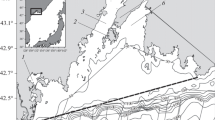Abstract
Background
Biocommunities of phototrophic microorganisms (principally cyanobacteria) developing on the surface sediments of shallow, warm and semi-isolated coastal environments, bind or trap small particles on their polysaccharide sheaths creating organosedimentary structures. Those structures are called algal mats and they are commonly flat and laminar in shape. They are also called recent stromatolites due to their remarkable similarity to the fossil ones.
Objectives
Not many geochemical studies exist concerning cyanobacterial mats in Mediterranean coasts, in comparison with the biological ones. Considering the importance of nitrogen and phosphorus in the cyanobacteria mat development, the present study aims to contribute to the knowledge of their chemical behaviour in such environments.
Methods
Sediment cores of about 10 cm length along with water samples were collected during the course of a year from two Greek coastal areas. Sediments were fractionated in three distinct layers according to their structure. A wet oxidation method for the simultaneous determination of total nitrogen and total phosphorus was applied to all sediment samples. The total organic carbon (TOC), the total inorganic phosphorus and the natural pigment content in the sediment samples were also determined. Standard spectrophotometric methods were used for the determination of the concentration of dissolved nutrients. In situ measurements of pH, temperature and salinity were also carried out.
Results and Discussion
The sampling areas were found to be in the mesotrophic level. The group of aerobic filamentous cyanobacteria dominated the sediment biocommunities. The pH of the sediment showed a gradual reduction downwards. The highest content of TOC, total nitrogen and total phosphorus were detected in the surface layer of the sediment samples. The contribution of organic phosphorus to the total phosphorous ranged between 0% and 50% with an average value of 26.6%. A depletion of organic phosphorus in the anoxic middle layer of the sediment was detected. A good positive correlation between total nitrogen and chlorophyll-a, as well as total nitrogen and TOC in the surface sediment layer, was observed. A good negative correlation between total phosphorous in sediments and dissolved phosphates in seawater was also observed.
Conclusions
The high content of total nitrogen recorded in the surface sediments indicate that cyanobacteria accumulate nitrogen acquiring it from the sediment, the marine environment and the air (in the form of N2). A proportional accumulation in phosphorus also happens, although to a lesser degree. The temporal fluctuation of nitrogen content in the sediment's surface layer agrees with the temporal fluctuation of primary production. The cyanobacterial mat acts as a natural pump that transfers phosphorus from seawater to the surface of the sediment.
Recommendations and Outlook
A further, more extensive, multidisciplinary study of cyanobacterial mats is needed for the determination of the biogeochemical processes that take place there and for the effective environmental management of the areas where these forms develop.
Similar content being viewed by others
Author information
Authors and Affiliations
Corresponding author
Rights and permissions
About this article
Cite this article
Ladakis, M., Dassenakis, M. & Pantazidou, A. Nitrogen and Phosphorus in Coastal Sediments Covered by Cyanobacteria Mats (9 pp). J Soils Sediments 6, 46–54 (2006). https://doi.org/10.1065/jss2005.10.150
Received:
Accepted:
Published:
Issue Date:
DOI: https://doi.org/10.1065/jss2005.10.150




